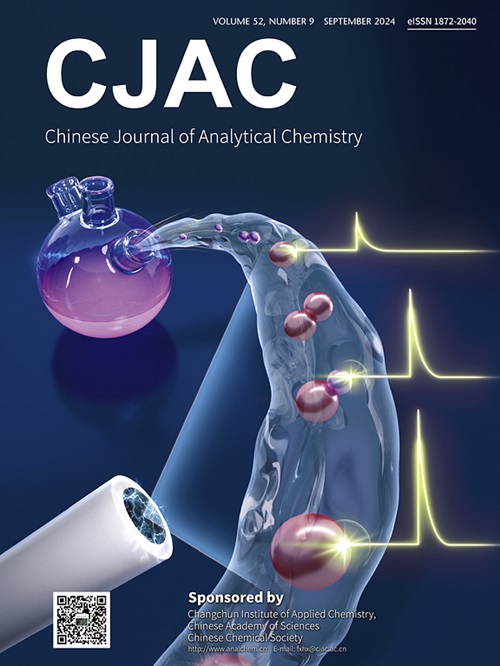A selective methane gas sensor based on SnO2 utilizing a reactive and porous substrate
IF 1.3
4区 化学
Q4 CHEMISTRY, ANALYTICAL
引用次数: 0
Abstract
Generally, selective response of metal oxide semiconductor (MOS) gas sensors is dominated by the process of gas diffusion and reactions through the sensing layers. The microstructure and surface chemical activities of MOS thin films simultaneously control the diffusion reaction process and modulate electronic conduction. Thus, it is very difficult to modulate the diffusion-reaction process just using sensing layers because gas diffusion and reaction process cannot be separated from the sensing films. Hence, the selective response of the MOS gas sensors is barely satisfactory. In this study, a novel sensor structure was proposed. The MOS sensing layer was printed on a porous ceramic substrate with a well-defined pore structure. The gas molecules must diffuse through the porous substrate before contacting the sensing layer of the MOS. Therefore, the diffusion reaction and sensing processes are separated from each other and are performed by two different parts of the sensor devices. Consequently, the selective response was significantly improved by the proposed sensor structure.

利用反应性多孔衬底的SnO2选择性甲烷气体传感器
通常,金属氧化物半导体(MOS)气体传感器的选择性响应是由气体在传感层中的扩散和反应过程决定的。MOS薄膜的微观结构和表面化学活性同时控制着扩散反应过程和调节电子传导。因此,由于气体的扩散和反应过程不能与传感膜分离,仅用传感层来调节扩散-反应过程是非常困难的。因此,MOS气体传感器的选择性响应几乎不能令人满意。在本研究中,提出了一种新的传感器结构。MOS传感层被打印在具有明确孔隙结构的多孔陶瓷衬底上。气体分子在接触MOS的传感层之前必须先通过多孔衬底扩散。因此,扩散反应和传感过程是相互分离的,由传感器器件的两个不同部分执行。因此,所提出的传感器结构显著改善了选择性响应。
本文章由计算机程序翻译,如有差异,请以英文原文为准。
求助全文
约1分钟内获得全文
求助全文
来源期刊
CiteScore
3.60
自引率
25.00%
发文量
17223
审稿时长
35 days
期刊介绍:
Chinese Journal of Analytical Chemistry(CJAC) is an academic journal of analytical chemistry established in 1972 and sponsored by the Chinese Chemical Society and Changchun Institute of Applied Chemistry, Chinese Academy of Sciences. Its objectives are to report the original scientific research achievements and review the recent development of analytical chemistry in all areas. The journal sets up 5 columns including Research Papers, Research Notes, Experimental Technique and Instrument, Review and Progress and Summary Accounts. The journal published monthly in Chinese language. A detailed abstract, keywords and the titles of figures and tables are provided in English, except column of Summary Accounts. Prof. Wang Erkang, an outstanding analytical chemist, academician of Chinese Academy of Sciences & Third World Academy of Sciences, holds the post of the Editor-in-chief.

 求助内容:
求助内容: 应助结果提醒方式:
应助结果提醒方式:


